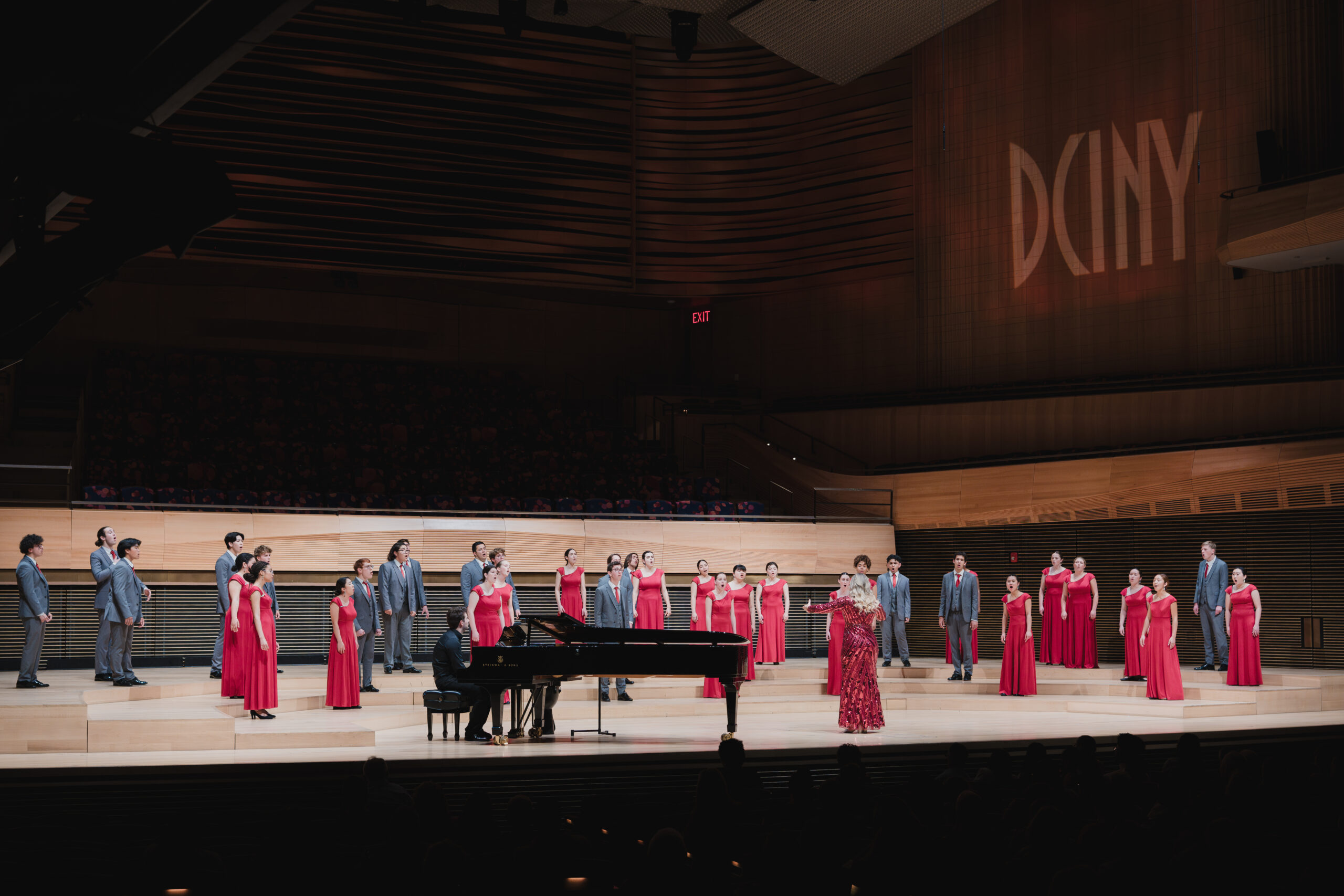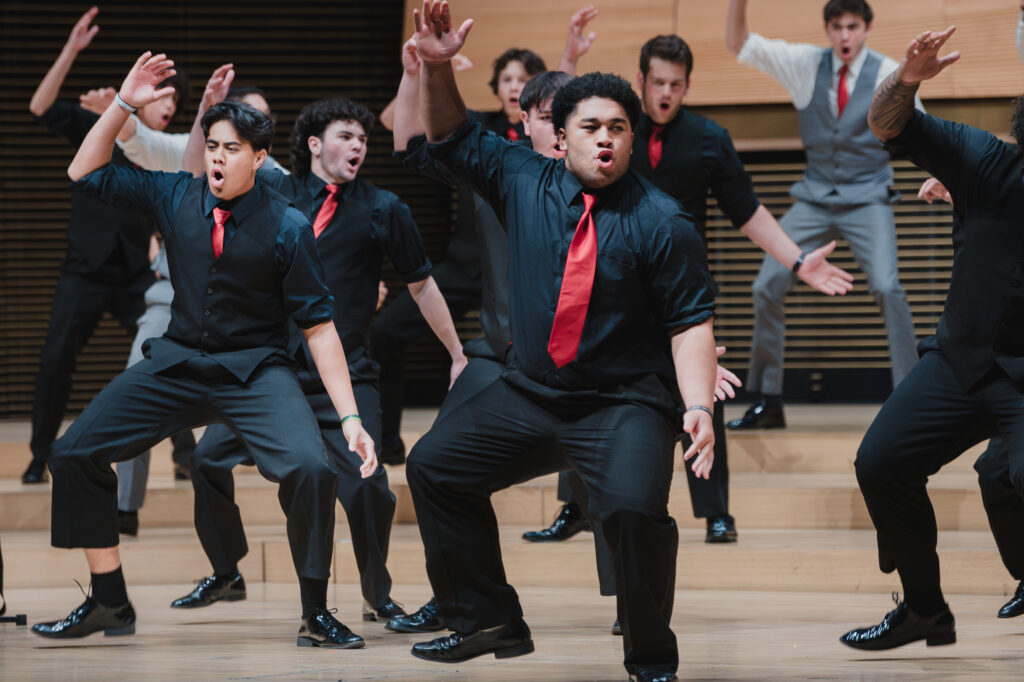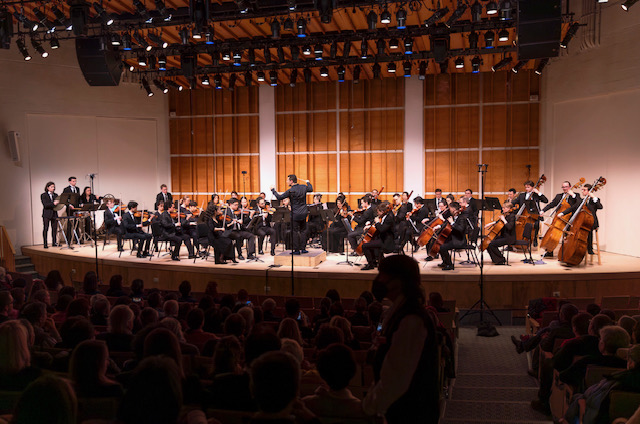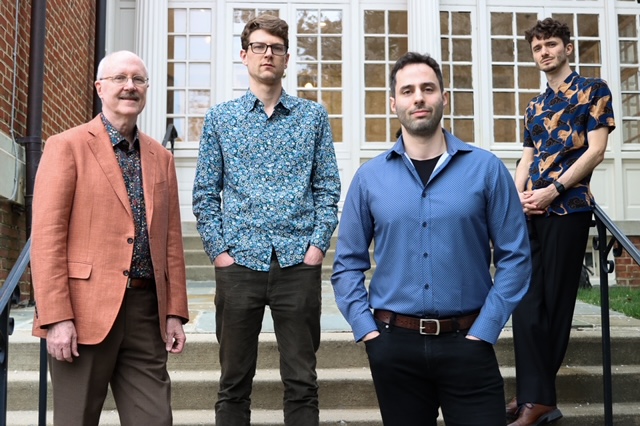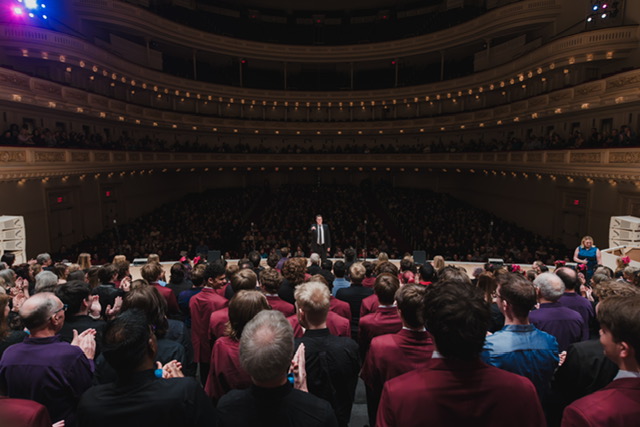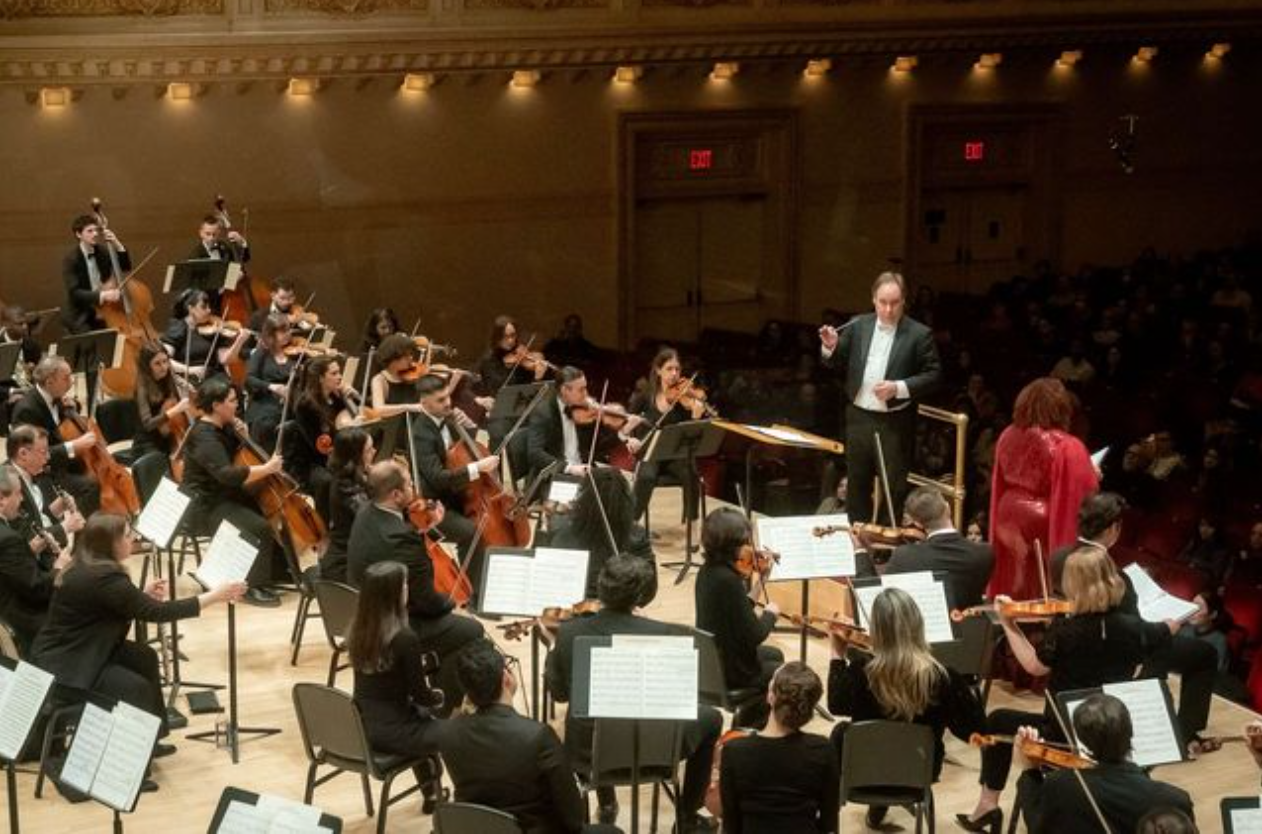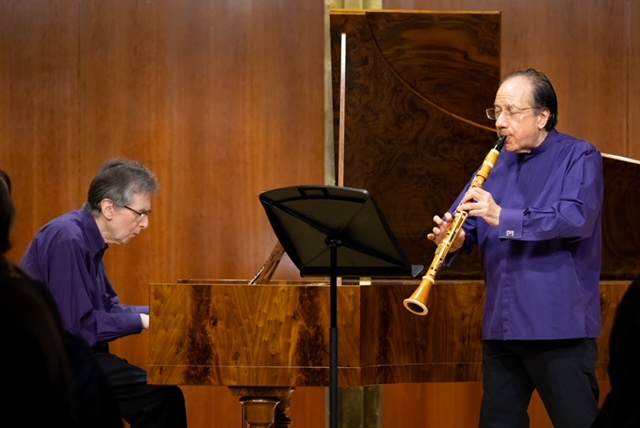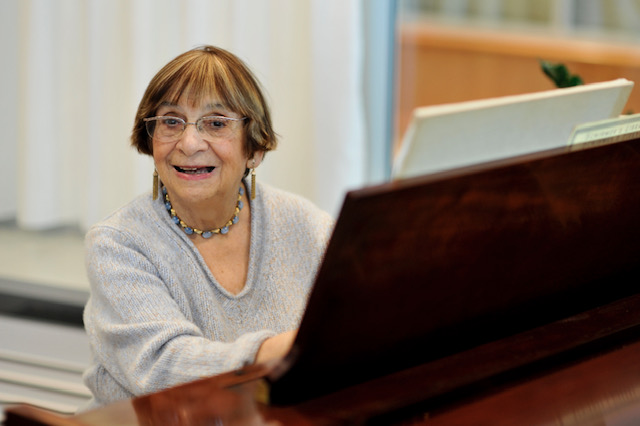Ola Gjeilo, DCINY composer-in-residence/piano
José Daniel Flores-Caraballo and Irene Messoloras, guest conductors
Anna Schubert, soprano
Distinguished Concerts Orchestra
Distinguished Concerts Singers International
Stern Auditorium at Carnegie Hall, New York, NY
April 22, 2024
Distinguished Concerts International New York (DCINY) has forged lasting relationships with world-renowned artists to great effect. Karl Jenkins and Eric Whitacre are two names that immediately come to mind. It’s time to add Ola Gjeilo to that list. Tonight’s concert entitled A Soul Filled Journey: The Music of Ola Gjeilo was Mr. Gjeilo’s sixth appearance with DCINY (as pianist as well as composer). The Distinguished Concerts singers hailed from Ohio, Indiana, New York, Oklahoma, Missouri, Canada, Texas, Washington, California, Vermont, and “individual singers from around the globe.”
The program, notes about the works, and information about the featured artists can be read by clicking the follow link: A Soul Filled Journey.
Conductor José Daniel Flores-Caraballo and Mr. Gjeilo took the stage. Mr. Gjeilo took his seat at the piano and after a brief nod the first half began with Dark Night of the Soul. This work is one of this listener’s favorite of Mr. Gjeilo’s compositions with its driving ostinato, the “pull back” into a mediative episode that slowly builds to a burst of ethereal light, and the return to a driving ostinato. It was particularly exciting to hear such large forces (a chorus of 150+ and a full string orchestra instead of a string quartet). It did begin with a balance issue between the chorus and orchestra, but the alert Maestro Flores-Caraballo quickly remedied this. One might expect some muddiness in a chorus of this size, but the diction was commendable, and the projection (after the tenuous start) was very good. The Distinguished Concerts Orchestra delivered its characteristic “on-the mark” performance that I have grown accustomed to with these fine players.
Sacred Heart (Ubi Caritas III) followed. Mr. Gjeilo has a fondness for setting the Ubi Caritas (Where true charity is, God is there). He has done three settings (each setting to an individual verse). As the title clearly states, this is the third setting, but it is the second verse that is used here. Mr. Gjeilo is not lacking in the gift of writing beautiful music, and this is another example of that gift. With luminous strings and piano, it was enchantingly beautiful.
Across the Vast, Eternal Sky is centered around the idea of the phoenix, and the idea of rebirth and spiritual renewal. It is a concept that did not always seem to “match” the music. There is what I would call a sentimental waltz-like motif in the solo piano that does not seem to fit, but that is one opinion and perhaps it was clear to Mr. Gjeilo (and others) what he was getting at here. Whatever reservations I had about it did not have any bearing on what was another top-notch performance.
Luminous Night of the Soul was a bookend to Dark Night of the Soul (or maybe more aptly closing the circle). It shares a theme with Dark Night of the Soul, but to different means; Dark Night is lyrical, while Luminous is relentless. Mr. Gjeilo has written that the two works could be performed as a single two-movement piece. Luminous Night of the Soul was given the same dynamic performance as its companion was at the opening of this half.
Maestro Flores-Caraballo led with vigor and unflagging involvement. As just a little aside, it was a treat for this lefty to see a left-handed conductor in action. All that nonsense about ensembles being unable to follow left-handed conductors is just that – nonsense! Maestro Flores-Caraballo had everything and everyone under his complete control. The audience responded with a standing ovation for all.
After intermission, conductor Irene Messoloras took the podium, and Mr. Gjeilo returned to the piano. Soprano Anna Schubert took a seat at the front of the stage, waiting for her role in the Twilight Mass. The first work of the second half was Ubi Caritas (Ubi Caritas I). This work takes Maurice Duruflé’s setting as its inspiration. With such a masterful role model, it is little wonder that this is a striking work. To be sure, Mr. Gjeilo does not use existing chant like Duruflé – just the idea of chant itself – but the form and dynamic range follow Duruflé’s. Mr. Gjeilo has also added a piano part, which he played on this occasion. I admit to having skepticism about gargantuan forces rendering this work sensitively, but this was a worry I need not have had. Radiant is the first work that comes to mind, and Mr. Gjeilo’s additions at the piano lent wings to what was already divine.
Twilight Mass was the final work of the evening. This reviewer was present at the November 13, 2023, DCINY world premiere of Twilight Mass, so instead of re-hashing information about the work and its conception, the interested reader can click on the following link to learn more: DCINY Twilight Mass in Review 11/13/2023. The well-written program notes by Philip Hoch and Erin Wood characterize the individual movements excellently in a way easily understood by listeners without musical training.
The main question I had was how my second hearing would be. Would my earlier enthusiasm be tempered or even diminished? Short answer: A resounding no! If anything, my feelings were not only solidified, but intensified. I believe this to be one of Mr. Gjeilo’s finest works that shows all his abundant gifts to the maximum effect. I don’t want to repeat myself here from the earlier review, but my favorites remain the same, with the Kyrie still reverberating in my mind’s ear. Soprano Anna Schubert was transcendent. Her voice is one of the most crystalline pure I can recall hearing in some time. Her Laudamus Te was the highlight of her highlight-filled solos. Maestra Messoloras led with great confidence and meticulous attention to detail. It was obvious how well prepared the chorus (and the orchestra for that matter) were in what was not only a great ending to the concert, but easily the highlight for this listener. I’ve said it before, and I will say it again: this work needs to be recorded and made available for all to hear.
At the end, the audience gave Maestra Messoloras, Ms. Schubert, and Mr. Gjeilo a well-deserved standing ovation. I’m already looking forward to Mr. Gjeilo’s seventh appearance with DCINY. Congratulations to all!


